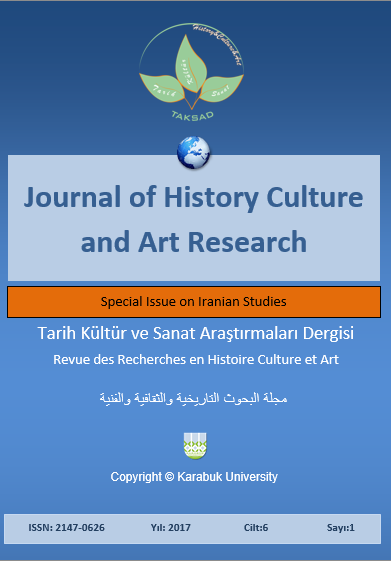Strategic Orientation of Tourism Sustainable Development: Case Study of Darband
DOI:
https://doi.org/10.7596/taksad.v6i1.736Keywords:
Tourism, Darband river-valley, Sustainable development, Strategic planning.Abstract
Change in environment situation, attitudes, and structure are factors influential on goals of planning that finally change the program. The planning with traditional approach has not the ability to cope with these changes and would lead to failure. This condition led to the thought that planning should change direction of strategic planning and apply a new direction and behavior; this attitude underlined the innovation of strategic planning. The role of strategic direction in each strategic planning is to determine orientation and also prioritization of strategies. Since development strategy is one of the common ones, so the goal of current research is strategic detraction for development of Darband river-valley recognized by two techniques of IE and SPACE techniques. The research is of survey type performed by questionnaires among experts in the field of planning during 2013-2014. This research is an applied research performed in two levels. The first questionnaire contains internal factors (strength- weakness) and external factors (opportunity-thread) influential on Darband river-valley development. The internal factor evaluation (IFE) and external factor evaluation (EFE) tables were also completed by second questionnaire. The results showed that Darband valley is developed more than its capacity; and it not only needs to further development, but also requires management tools to improve current situation.
References
City Texture Adviser Engineering (2007). Mode of Development of Tehran District 1, Tehran: Institution of studies and advancing the development plans of Tehran city.
Dameshghi, M. (2010). Investigation of Space Capabilities of Tehran River Valleys for Recreation, Case Study of Darakeh River Valley, vol. 50.
Daneshpoor, S. A. & Elahi, M. (2010). Recognition of the Role of Public Space of Darband Street in Structuring of Civil Life, Manzar, Iranian Academic Journal of Landscape, 2(7), 20-23
Daneshpour, S. A., Leghaee, H., Musavifatemi, H. & Abbasi, R. (2011). Environmental Impacts of Farahzad River-Valley and Its Importance on Urban Planning. 1st National Conference on Environmental Preservation and Planning, Tehran.
Moradimasihi, V. (2002). Strategic Planning in the Metropolises (Case study: London). Tehran: Urban planning Press.
Panahi, B. (2010). Description of Darband District, Tehran: Institution of Andishesaraye Shahr.
Pourhosseini, S. J. (2008). Finding the Roots of Strategic Thought and Planning, Tadbir Monthly Journal, 19(194). 25-30
Rameshk, A. (2002). Strategic Planning with the Approach of Reengineering, Master thesis in Industrial Engineering, Islamic Azad University, Tehran.
Rezvani, M. (2008). Rural Tourism Development, Tehran: University of Tehran Press.
Shojaee, M., Ghochani, S. M. & Kazemi, F. (2012). Use of SPACE Matrix of Assessment of Strategic Measurements and Conditions: Case Study of Concrete Firm of Mahde Boton, Quarterly of Cement Technology, 7(53), 13-21
Zargham, H. (1996). Strategic Planning Model of Iran Tourism, PhD Dissertation, University of Tehran, Tehran.
Downloads
Published
How to Cite
Issue
Section
License
All papers licensed under Creative Commons 4.0 CC-BY.- Share — copy and redistribute the material in any medium or format
- Adapt — remix, transform, and build upon the material for any purpose, even commercially.
Under the following terms:
Attribution — You must give appropriate credit, provide a link to the license, and indicate if changes were made. You may do so in any reasonable manner, but not in any way that suggests the licensor endorses you or your use.
- No additional restrictions — You may not apply legal terms or technological measures that legally restrict others from doing anything the license permits.







